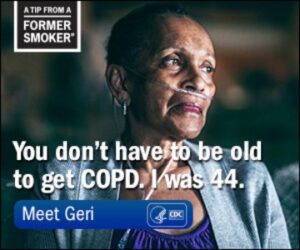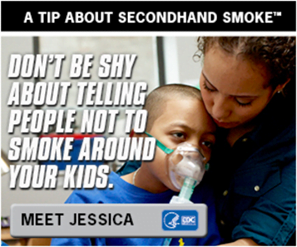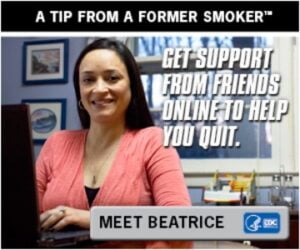Women’s History Month
March is Women’s History Month. It was established to recognize the specific achievements women have made over the course of American history. While there isn’t a focus on women’s health this year, this post is going to touch on women, housing, and smoking/secondhand smoke exposure.
Women and Housing1
Please note: the report being cited compared women to white men only. Alaska Native and American Indian was not included for either reported genders.
Cost Burden
Cost burden in housing is defined by a household spending more than 30% of its income on housing costs. Women renters who were raising at least one child on her own were 1.8x more likely to deal with a cost burden than their white male counterparts. Single women were 1.3x more likely than their white male counterparts. There were disparities by race, with Hispanic women most likely to be dealing with a cost burden. White women were the least likely to be dealing with a cost burden. They were still more likely to face a cost burden than white men.
Severe Cost Burden
Severe cost burden is when a household is paying more than 50% of its income on housing costs. Again, women were more likely to face severe cost burden then white men. Women renters raising at least one child on her own were 2.2x more likely to face a severe cost burden than their white male counterparts. Among single renters, women were 1.46x more likely to deal with a severe cost burden than white men. Like with cost burden, Hispanic women were most likely to deal with a severe cost burden while white women were the least likely. Every racial group were more likely to deal with it than white men.
Why This Matters with Secondhand Smoke?
Homeownership can help individuals avoid unwanted smoke. However, homeownership isn’t realistic for every individual who wants it. Every state, including Alaska, lacks affordable rental homes. This can make it challenging to save for buying a home. Facing a higher cost burden while renting, women may face challenges in saving up for housing. As noted in the Black History Month blog post, racial discrimination in real estate, lending practices, and federal housing policy can make homeownership difficult for certain communities of color. This can create even more challenges for women of those communities.
Therefore, to help reduce unwanted secondhand smoke exposure, multiunit housing entities can help create smokefree environments by adopting smokefree policies. These policies can encourage some who smoke to quit as well. If you are interested in learning more about smokefree polices, please contact the American Lung Association in Alaska at 907-931-5470 or at SmokeFreeHousingAK@Lung.org.


Tobacco Use and Secondhand Smoke Exposure
In Alaska, women use cigarettes, e-cigarettes, and smokeless tobacco products at lower rates than men. Youth are more likely to use e-cigarettes while adults are more likely to use cigarettes.3 This follows national trends.2 Alaskan women of childbearing age smoked, vaped, and used smokeless tobacco products more than women outside of childbearing age.3 Nationally, lesbian and bisexual women were more likely to smoke than straight women.2
Among Alaskan women who were pregnant, 12% smoked cigarettes during the last 3 months of pregnancy in 2017. Alaska Native women were significantly more likely to smoke cigarettes during that time of their pregnancy than non-Alaska Native women (28% vs. 7%, respectively). Alaska Native women were also more likely to use chew, Iqmik, and/or snuff during pregnancy. Alaska Native women who used smokeless tobacco products during pregnancy was about 20% while non-Alaska Native women was about 1%.3
Among youth, secondhand smoke exposure was similar among both genders for those aged 3-11. Girls aged 12-17 were less likely to be exposed to secondhand smoke than boys of that age group.4 Adults face similar levels of secondhand smoke exposure when looked at by gender.4 However, among women, secondhand smoke exposure is more common among non-smoking lesbian women than among non-smoking straight women.6


Health Risks of Smoking and Secondhand Smoke on Women1,7
Women share a much larger burden of smoking related disease and death despite a much smaller gap between men’s and women’s smoking rates than in the past. Cigarette smoking kills an estimated 202,000 women each year in the U.S.
Reproductive Issues
- More irregular or painful periods
- Low estrogen levels, which can lead to mood swings, fatigue, and vaginal dryness
- Go through menopause at a younger age and have worse symptoms
- Have trouble getting pregnant
Pregnancy and Impacts on Baby
- Higher risk of premature birth
- Premature babies may have more health problems at birth and later in life
- Higher risk of serious birth defects
- Lower chance of a healthy birthweight
- Less likely to have normal brain development before birth and through early childhood
- More likely to die from sudden infant death syndrome
- Quitting smoking lowers the risk of miscarriage and ectopic pregnancy
- Ectopic pregnancy is a dangerous condition when the embryo implants outside of the uterus.
- Quitting smoking can also increase the chance that the baby’s lungs develop well
Respiratory Issues
- Women are more likely than men to develop severe COPD at younger ages
- More women than men die from COPD each year
Cardiovascular Issues
- People who smoke have an increased risk of dying from heart disease
- For those under 50, most cases of heart diseases are related to smoking
- Women over the age of 35 have a slightly greater risk of dying from heart disease compared to men who smoke
- Women who smoke while using oral contraceptives increase their risk of heart disease.
- Women who smoke have a greater risk of dying from an abdominal aortic aneurysm than men who smoke.
Cancer
- Increased risk cervical cancer as well as many other cancers
- More women die from lung cancer than any other cancer, including breast cancer
- Smoking causes most lung cancer deaths in both genders
- There are more new cases of lung cancer in young women than in young men (30-49)
Other
- Postmenopausal women who smoke have lower bone density than women who never smoked
- Increased risk for hip fracture
- Skin wrinkling, which can make smokers appear prematurely older


Marijuana Use in Alaska8
2017 marked the first year that females in high school were more likely to currently use marijuana than males. Heavy marijuana use was about the same for both genders. Adult males were more likely to be heavy marijuana users. Smoking was most often cited for “usual” mode of use among youth and adults. Non-medical only was the most common reason for use for Alaskan adults.
By pregnancy status (before, during, or after), marijuana use declined among all groups prior to legalization. Since legalization, use increased in all categories. In 2017, 8.6% or 900 births were to women who reported marijuana use during pregnancy. During the same year, 19.5% of women used it during the year prior to pregnancy and 11.8% used postpartum. About 11% of breastfeeding moms and 13% of non-breastfeeding moms used marijuana in 2017.
Health Effects of Marijuana9
Please note: more research is needed to determine marijuana’s impact on health. Research is still in relatively early stages. For a full list of health impacts, please visit: Health Effects of Marijuana | Health Effects | Marijuana | CDC.
Pregnancy and Impacts on Baby
- Studies suggest that marijuana use by a woman during pregnancy could be linked to the below problems in their children later in life
- Attention
- Memory
- Problem-solving skills
- Behavior
- Chemicals from marijuana can be passed to a baby through breast milk. The health effects of are not yet fully known
- THC is stored in body fat and slowly released over time, meaning a baby could still be exposed even after a person has stopped using marijuana
Secondhand Marijuana Smoke
- Secondhand marijuana smoke contains many of the same toxic and cancer-causing chemicals found in tobacco smoke. It also contains some of those chemicals in higher amounts.
- THC can be passed to infants and children through secondhand smoke. People exposed to secondhand smoke can experience psychoactive effects
- Studies have found a strong association between reports of having someone in the home who uses marijuana and the child having detectable levels of THC. Children exposed to THC are potentially at risk for negative health effects.


Resources
- Smokefree policies should include all tobacco products and marijuana. For assistance, please reach out to SmokefreeHousingAK@Lung.org or 907-931-5470
- Cessation and Education Resources:
- Alaska State Quitline: includes an enhanced program for pregnant women. However, Nicotine Replacement Therapy would need to be approved by your health care provider if you are pregnant.
- Live Vape Free: parent’s guide for talking with teens about vaping.
- Live Vape Free Teen Texting Program: teens can text VAPEFREE to 873373 to learn more about vaping and quitting.
- Smokefree Woman: tools and tips for nonpregnant and pregnant women as well as motherhood around cessation and tobacco
- Smokefree Teen: tools and tips for teens around cessation and tobacco
- Tips from a Former Smoker: learn more about other’s experience with smoking and/or quitting
- SAMHSA’s National Helpline: helps individuals and family members facing mental and/or substance use disorders. Provides referrals to local treatment facilities, support groups, and community-based organizations.
- Lungforce: Initiative anchored by the American Lung Association that unites women, men, and caregivers across the country to stand together against lung cancer.
- Turquoise Takeover Celebration: join the American Lung Association for their annual turquoise takeover May 9th-16th. Wear or turn your social media turquoise that week to help raise awareness for lung cancer. For more ideas, click here.
References
- Gender Equity & Housing – Opportunity Starts at Home (opportunityhome.org)
- Women and Tobacco Use | American Lung Association
- FY20 Alaska Statewide Regional Profiles Tobacco Report
- AK Tobacco Facts 2019 Update (alaska.gov)
- Products – Data Briefs – Number 348 – August 2019 (cdc.gov)
- Products – Data Briefs – Number 396 – February 2021 (cdc.gov)
- Lesbian, Gay, Bisexual, and Transgender Persons and Tobacco Use | CDC
- Smoking’s Impact on Women’s Health | Smokefree Women
- Marijuana Use and Public Health in Alaska 2020



